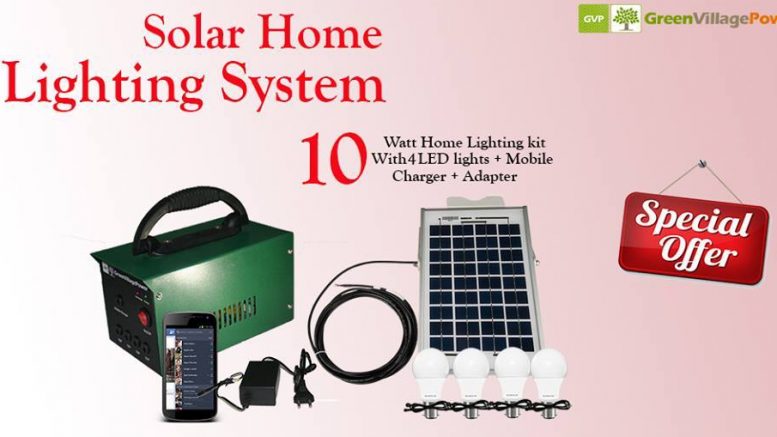India still has several villages with power problems. There are places that are deprived of light for as long as 8-10 hours. Despite the presence of a super power of light and energy bestowed by Nature (the sun), a surprisingly large section of Indian population lives in darkness most of the time. Solar home lighting system can bring light into the lives of people, literally.
Harnessing solar energy
Energy of the sun is renewable. It will not exhaust, at least in some billion years. So, doesn’t it make sense to adopt this form of energy in the wake of depleting earth’s energy reserves? Moreover, solar energy causes no pollution. So, it can help you join the bandwagon of eco-friendly people who feel proud of doing something to save planet Earth.
Normal domestic light system powered by the sun can easily run your fans, lights, television, music system, and even refrigerator. It is as simple as this: the more appliances you use, the lesser backup you get; but that’s okay. However, appliances like TV, lights, and fan hardly consume much of the power. So, you can easily save power bill. People living in areas of power cuts can improve their lifestyle and banish the worry of dark nights and scorching summer days. Enjoy continuous power in your homes.
Different power needs; different systems
Installing a solar home lighting system is a one-time investment. Of course, you need regular maintenance, but you are saved from hefty power bills. A typical system features inverter, battery, solar panels, and others. Inverter based solar power systems are good for people who wish to run multiple appliances other than fans and lights.
Solar inverters charge batteries through power from solar panels during the day. A standard 1 kilowatt domestic solar power plant usually takes 5-6 hours to charge its battery bank. If you haven’t used the battery fully during night, it will take lesser time to charge the next day. Modern solar inverters come with programmable controls. You can decide how much energy to be used and when.
Solar panel types
Solar panels usually come in three types: thin film amorphous panels, polycrystalline panels, and monocrystalline panels. The thin film ones are usually not for domestic use. The second one is the commonest type of panel used for home lighting system. They are bluish in color. They feature high life span and perform better in hot conditions. India is a tropical country with long, hot summers; so these panels are ideal for this land. They are inexpensive too.
The last one is dark blue in color. They are made of pure grade silicon and feature a high efficiency; but they are most suited for cooler climates.
Installing panels – a vital step
To extract the maximum from solar panels, their positioning is crucial. Earth’s position to sun changes throughout the year; but it is not practical to change position of panels. So, you must fix them at an angle that offers optimum output in all seasons. According to professionals, to harness full sunlight from east to west path of the sun, you must install panels facing south with a suitable angle that complements the geographical location of your home.
Solar panels usually come with 25 years warranty period; but they work longer. According to MNRE standards, a solar panel must give minimum 90 per cent output in the first 10 years of its installation; then 80 per cent output after 25 years. Panel’s efficiency decreases with wear and tear caused by its aging and environmental exposure.
For more information on solar home lighting system and for purchase and installation, you can visit reputable sites like greenvillagepower. They are dedicated towards lighting people’s lives with the unparallel power of the sun.

Be the first to comment on "Solar Home Lighting System: Life without Power Cuts"